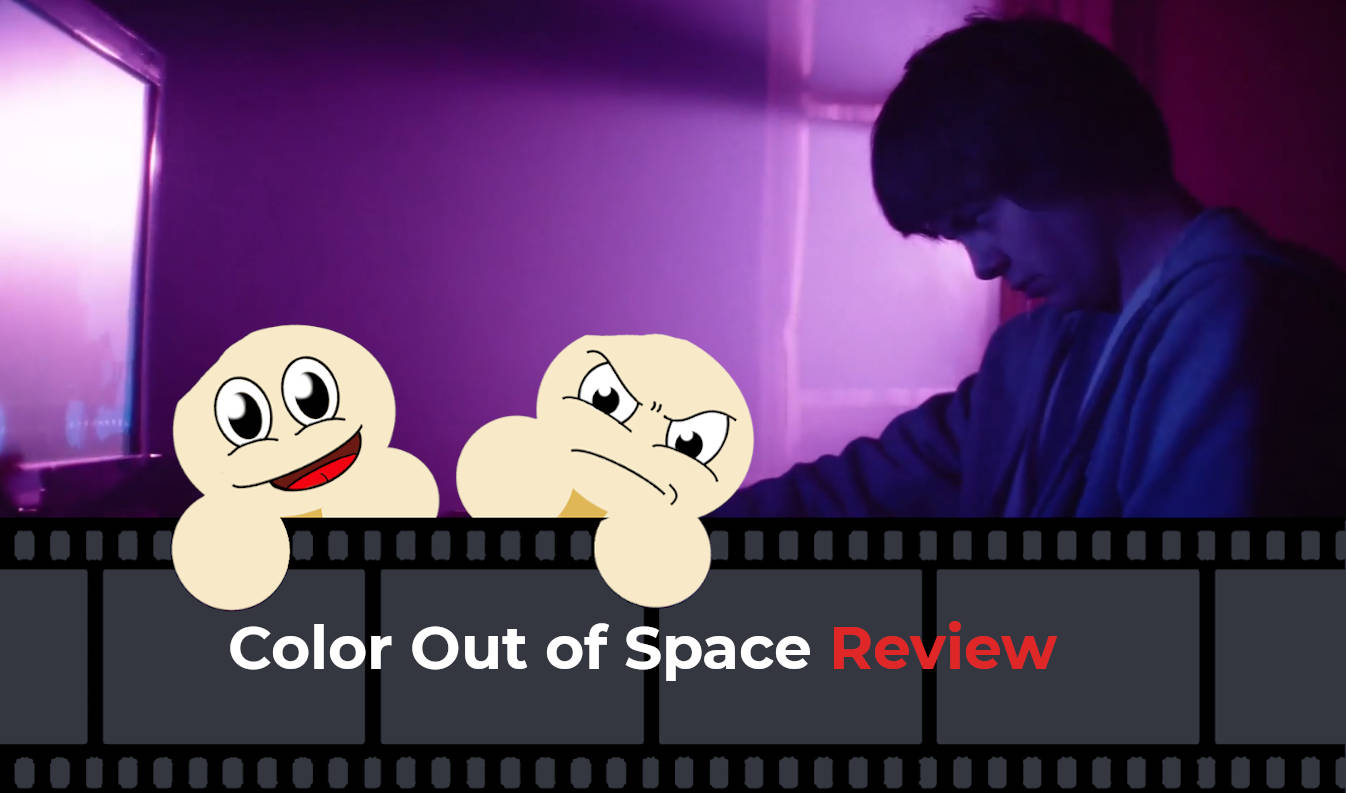A Colourful Experience
Introduction
Color out of Space is a 2019 indie horror film directed by Richard Stanley, who you may all know for his disastrous attempt at adapting H.G Wells’s The Island of Dr Moreu. Color Out of Space is based on the H.P Lovecraft novel of the same name but with a tad more Alpacas and a whole lot more of Nicholas Cage.
Plot and Setting
The film follows the Gardners, your average everyday Alpaca breeding traditional family unit on their farm near the fictional town of Arkham. While living off the fat of the land, their fun gets ruined when a strange meteor suddenly crashes right in front of their house. Upon closer inspection of the rock, they all notice that it is emitting bizarre colours, none of which they can comprehend.
What I believe could possibly be radiation leaks out of the rock and begins transforming the surroundings, mutating or killing everything around it, including the Gardners themselves. The changes to the environment have a similar aesthetic to Netflix’s 2018 horror film Annihilation, starring Natalie Portman. The distortion filters and the use of bright pink and red colours to signify the corruption on the landscape give the film an almost psychedelic appearance.
During the final act, the film decides to take a break from the serene and almost hypnotising effects for some gruesome body horror, a similar approach incorporated by John Carpenter’s The Thing.
While the Gardner family are getting very familiar with the levels of insanity of what it means to be in a Nicholas Cage movie, a hydrologist by the name of Ward Phillips(portrayed by Elliot Knight) is investigating the land for any abnormalities as part of a survey. However, he starts to worry for the locals’ safety when he discovers strange substances in his water samples after the meteor crash.
Being that the film was based on a book written by an early-twentieth-century author with a confused perspective of physics at best, the overall experience was well presented. The crew also did their best to try and streamline the themes for modern audiences, choosing to focus more on the fantastical elements of the book to inspire more intrigue.
Lovecraft’s narratives tend to be described from a third-person point of view by a character who does not actively take part in the story. However, in this case, Stanely wanted to get in on the action and have us watch everything from the Gardners’ perspectives. The pacing is also incredibly different, taking place in less than a week to get crazy, compared to the original adaption’s two years.
There is also a new subplot in the film surrounding the character of Lavinia Gardner(portrayed by Madeleine Arthur) and her fascination with the occult, even keeping a copy of the Necronomicon, an ancient tome that has made several cameos in Lovecraft’s works. Her subplot comes as a pleasant surprise opening the doors to the larger world of the Lovecraftian mythos, which could possibly be expanded upon if Richard Stanely wishes to explore it with future films.
Characters and Performances
Each of the actors played to their strengths throughout this film, with the exception of Brendan Meyer, whose character could have been replaced with a carton of milk, and no one would be the wiser. The teenage son’s only real contribution to the film was introducing Grant to Ezra(portrayed by Tommy Chong), the neighbourhood hermit. Otherwise, he would either wander off somewhere or just tagged along with the more rounded characters.
This film was made for Nicolas Cage’s eccentric personality, who plays the patriarchal role of the family. His mania is pushed to the forefront with almost comical outbursts of madness. There are moments where he would flip a switch swapping between a caring father and a deranged madman, swearing obscenities and leaping into fits of rage on a whim.
Unlike her co-star, Joely Richardson‘s performance was far more subdued, yet she did have a couple of moments to shine. The film also gives Theresa Gardner more to do than in the novel, portraying her as an up-and-coming businesswoman who has to manage her company’s affairs online. However, the character is put out of commission for most of the movie for one thing or the other.
The most defining change from the source material comes from the characters of Ward Philips and Lavinia Gardner, who each play a more active role in the narrative. They even have a blossoming romantic relationship going on between them, but then random alien colours happened. The children seem to be far more aware of the insanity going on around them than their folks and even tried to get out of dodge only to be thwarted by some random strange phenomenon or their unhinged father.
Conclusion
If you are a fan of films like Annihilation or The Thing, then Color Out of Space should fit well under your radar. At its best, the film is a deep dive into the realms of madness devised by the legendary agoraphobe, with Nicholas Cage lashing out to try and fend off the impossible force that is destroying his character’s family.
According to Richard Stanely himself, the film has the potential of jump-starting a trilogy of movies set in the Lovecraftian universe, with The Dunwich Horror being the second book he is planning on adapting to film. However, as it stands now, Color Out of Space has all the makings of becoming a terrific cult classic.
